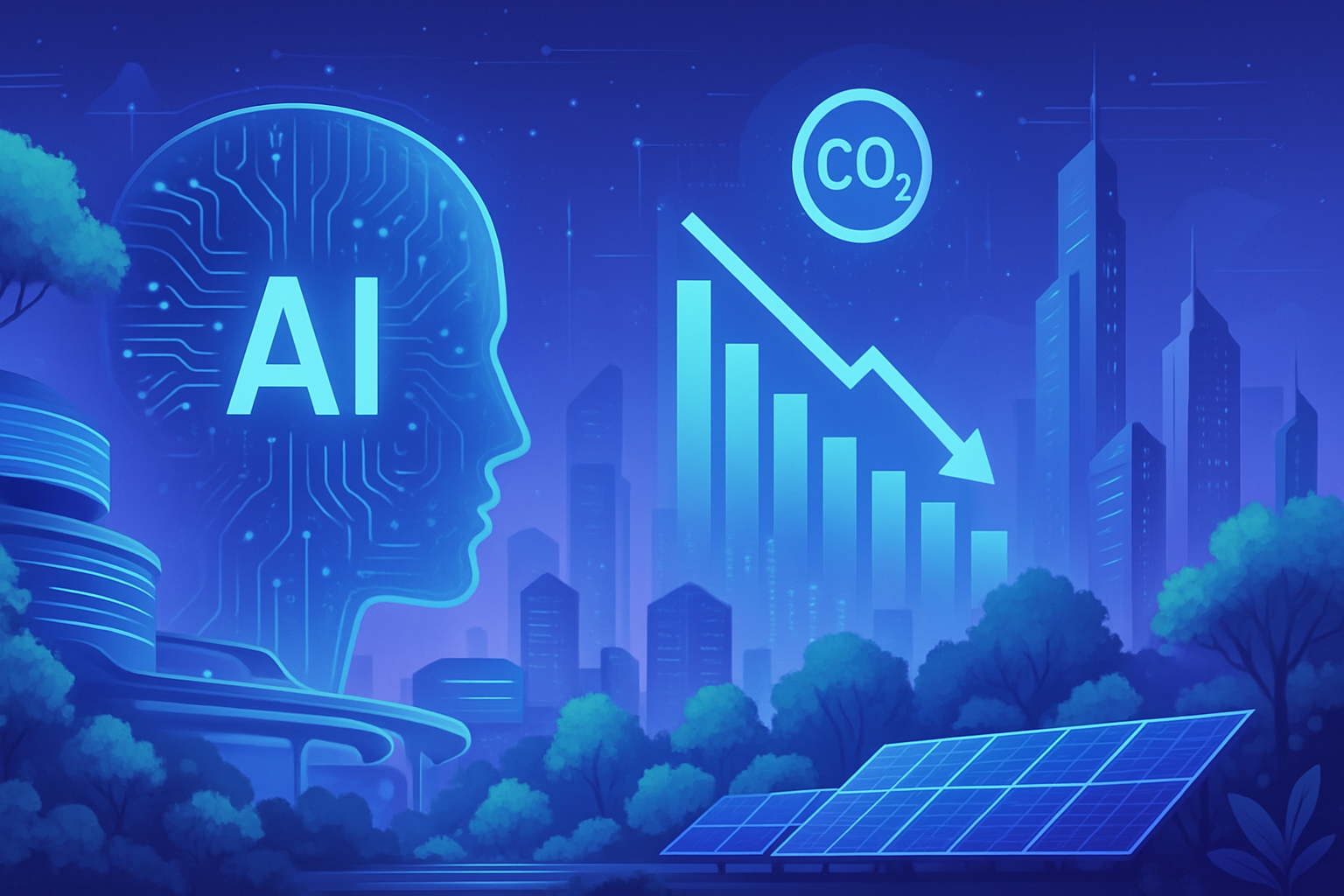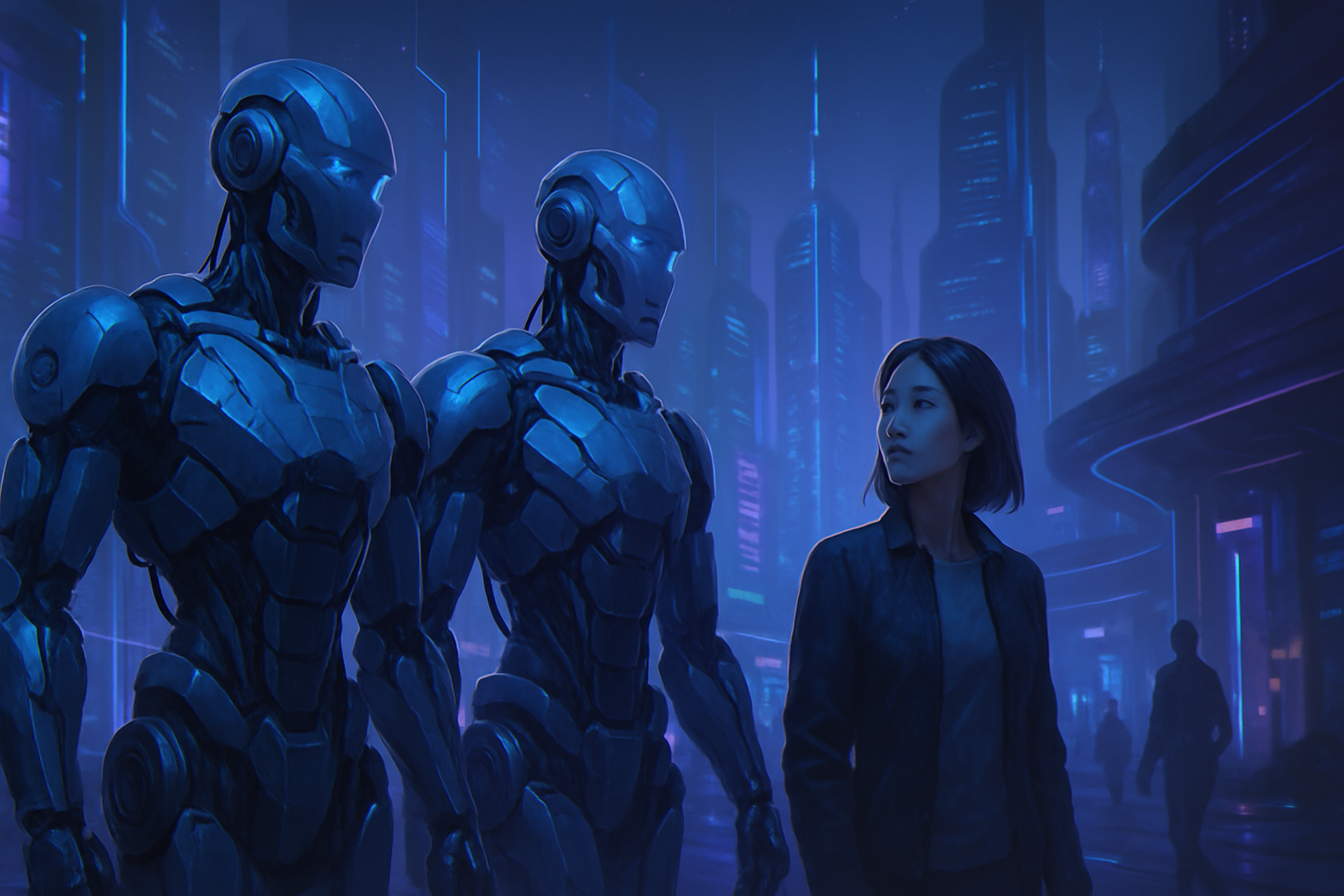Artificial intelligence represents a powerful lever in the fight against climate change. In the face of an unprecedented environmental crisis, the potential of this technology seems immense. Anchoring AI in our economy could lead to a reduction in carbon emissions without sacrificing our modern comforts. The energy, agriculture, and transport sectors can benefit from this transformation, optimizing their environmental impact and fostering sustainable growth.
A major contribution to emission reduction
A study conducted by the London School of Economics and Systemiq reveals that artificial intelligence (AI) has the potential to significantly reduce global carbon emissions. Researchers estimate that it is possible to decrease greenhouse gases by 3.2 to 5.4 billion tons annually by 2035. This significant reduction would far exceed the emissions generated by AI-related infrastructure.
Target sectors for sustainable optimization
The study results highlight the importance of three main sectors: energy production, livestock meat and dairy production, as well as passenger vehicles. Together, these industries account for nearly half of global emissions. By focusing AI optimization efforts on these areas, researchers suggest potential savings that could offset emissions associated with operating AI data centers.
Concrete applications of AI
Making complex systems more efficient
Modern life relies on complex networks, particularly in energy and transport. AI can transform these systems by improving their efficiency. For example, it helps anticipate renewable energy fluctuations and balance them with actual demand, as demonstrated by DeepMind‘s initiative, which optimized the economic value of wind energy by about 20%.
Accelerating innovation and reducing waste
To achieve net carbon balance by 2050, 50% of emission reductions will depend on emerging technologies. AI facilitates the development of these innovations. For instance, Google DeepMind’s GNOME has highlighted over two million new crystalline structures, promising for renewable energy. Furthermore, Amazon’s packing algorithms have saved more than three million tons of materials since their inception.
Influencing our daily choices
An individual’s daily decisions can generate up to 70% of emission reductions. AI can serve as a personal environmental coach, offering personalized recommendations. Using fuel-efficient routes via Google Maps represents a direct application. Home automation systems, such as Nest, optimize households’ energy consumption, leading to substantial CO2 emission reductions.
Anticipating climate changes
Planning for climate change requires analyzing large datasets. AI can provide accurate climate forecasts, as illustrated by the IceNet tool, which improves sea ice level predictions. This helps communities better prepare. Governments can also leverage this data to create climate policies likely to have a positive impact.
Ensuring safety in the event of disasters
Climate disasters necessitate early warning systems. AI becomes essential for predicting floods and fires. Google’s Flood Hub uses machine learning methods to provide flood forecasts up to five days in advance in 80 countries, thus enabling better protection for populations.
The stakes for a sustainable future
Statistics reveal that AI could reduce emissions from the energy sector by 1.8 billion tons. Improvements in plant-based proteins could lead to additional annual savings of 0.9 to 3.0 billion tons. Modernizing vehicle technologies could contribute to a decrease of 0.6 billion tons by 2035.
Researchers do not neglect to emphasize the need for proactive government intervention to guide AI development. Establishing incentives for green AI research and regulating environmental impacts is essential. Building an infrastructure that allows all communities to benefit from AI innovations will ensure a just transition.
Future perspectives
Creating a sustainable future requires international collaboration aimed at unlocking AI’s potential to reduce carbon emissions. Research on AI and its applications is accelerating, and economic, environmental, and social stakes are more intertwined than ever. This dynamic could foster a world where human activities and environmental protection move forward hand in hand.
Frequently asked questions about artificial intelligence and carbon emission reduction
How can artificial intelligence contribute to reducing global carbon emissions?
Artificial intelligence can optimize energy systems, improve plant-based protein production, and facilitate the development of clean technologies to reduce emissions in several key sectors.
What is the potential magnitude of carbon emission reduction through AI?
According to a study, the application of AI technologies could reduce global carbon emissions by 3.2 to 5.4 billion tons per year by 2035.
In which sectors is AI particularly effective at reducing emissions?
AI proves particularly effective in energy production, meat and dairy production, as well as transportation, which together account for nearly half of global emissions.
What benefits can AI bring to the transition to a zero-emission economy?
AI tools can encourage innovation, improve resource efficiency, and promote sustainable and inclusive economic growth.
What role do governments play in the application of AI for emission reduction?
Governments need to create incentives to promote green AI research, establish regulations to minimize environmental impacts, and invest in infrastructure to maximize the benefits of AI for the planet.
How does AI help predict climate changes and their impacts?
AI uses massive datasets to anticipate climate trends and evaluate the effectiveness of climate policies, allowing communities and governments to prepare better.
Does the use of AI to reduce emissions have a cost?
While the use of AI may generate emissions in the short term due to data centers, long-term savings far outweigh these emissions due to optimizations made in other sectors.
What technological innovations are driven by AI to help with the energy transition?
AI promotes the advancement of technologies such as renewable energy storage batteries, energy management systems, and optimization algorithms to reduce waste.
How can an individual benefit from AI to reduce their carbon footprint?
AI applications can help make more efficient choices, such as using low-carbon routes, optimizing energy use in homes, and promoting sustainable eating.






